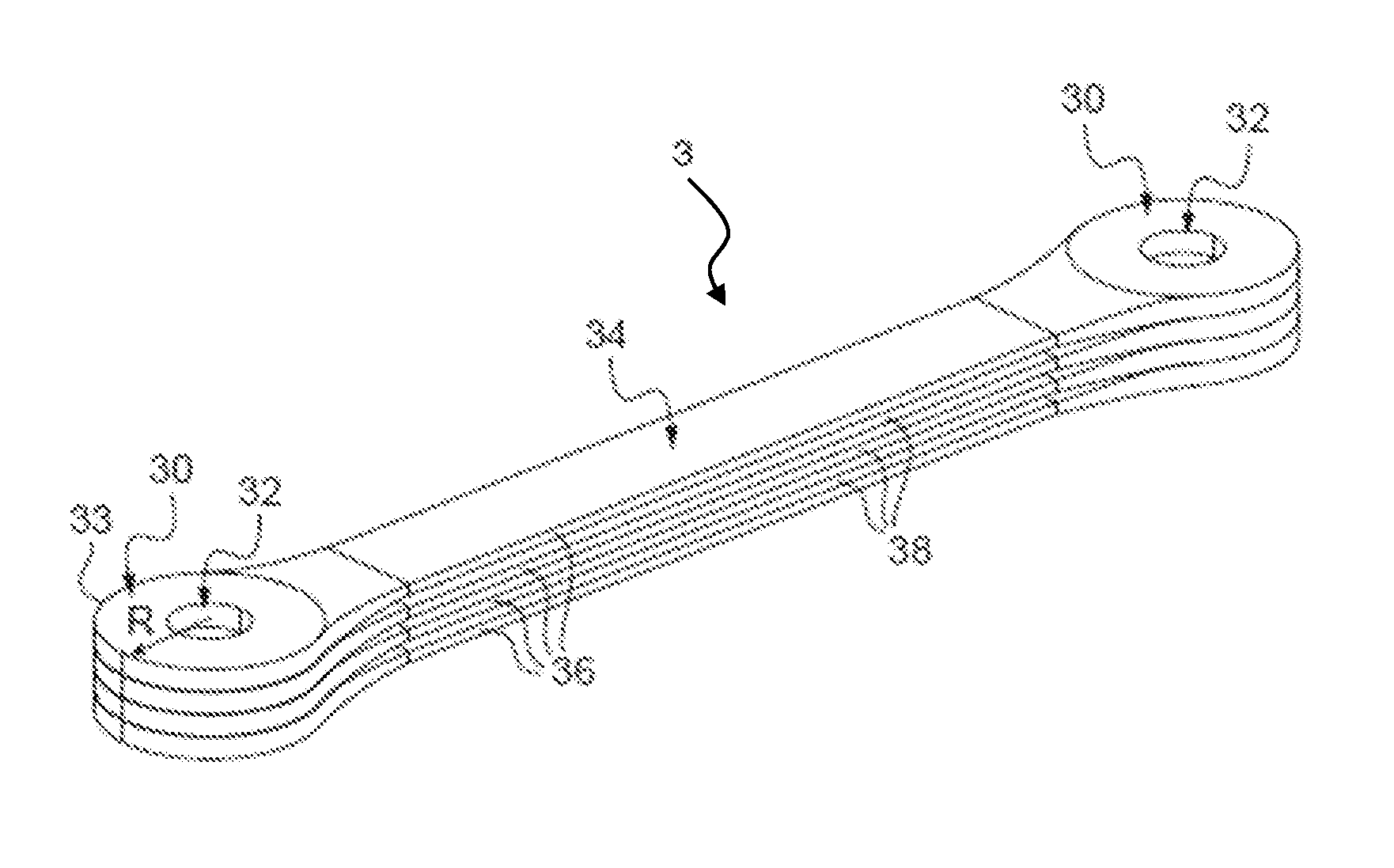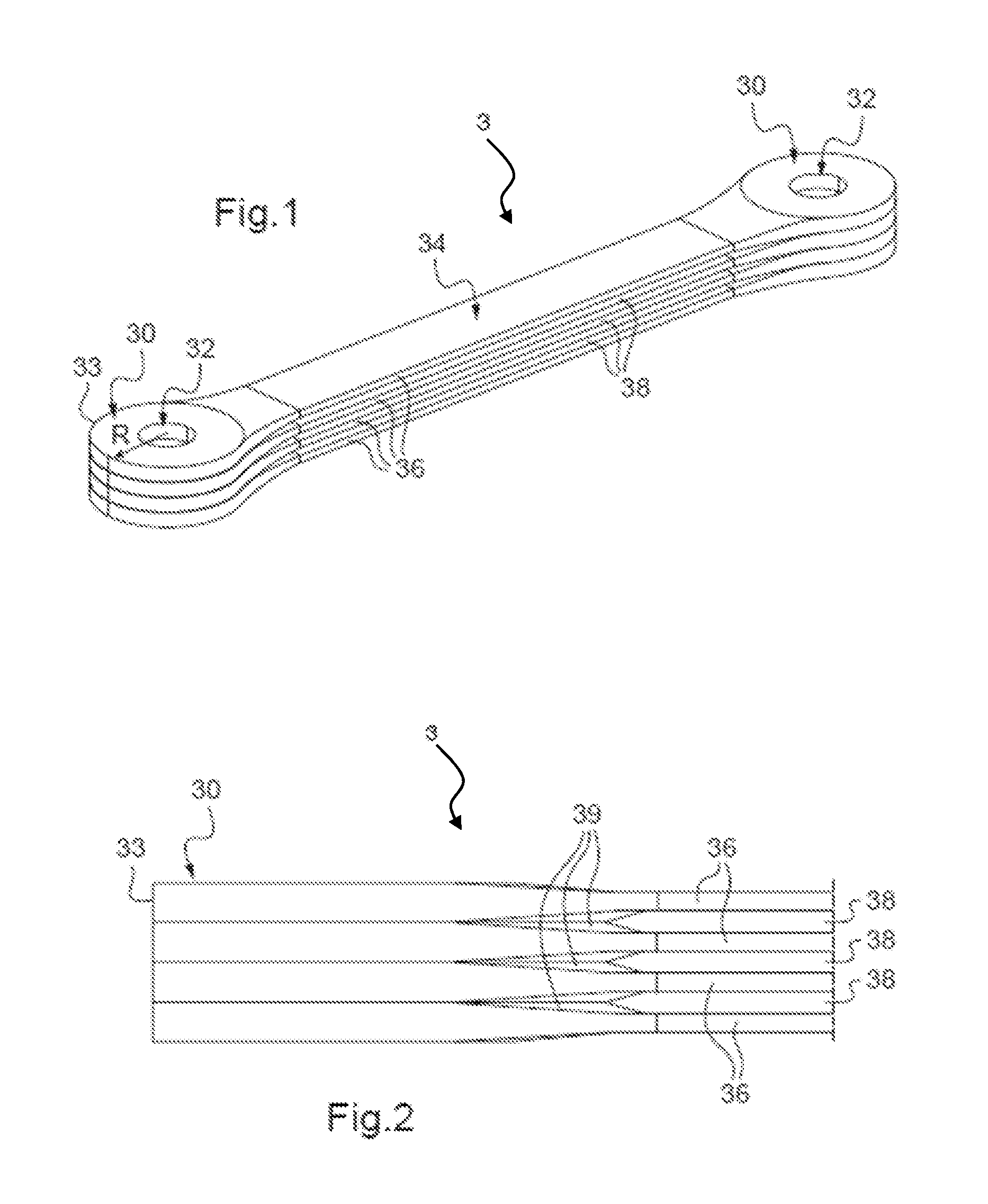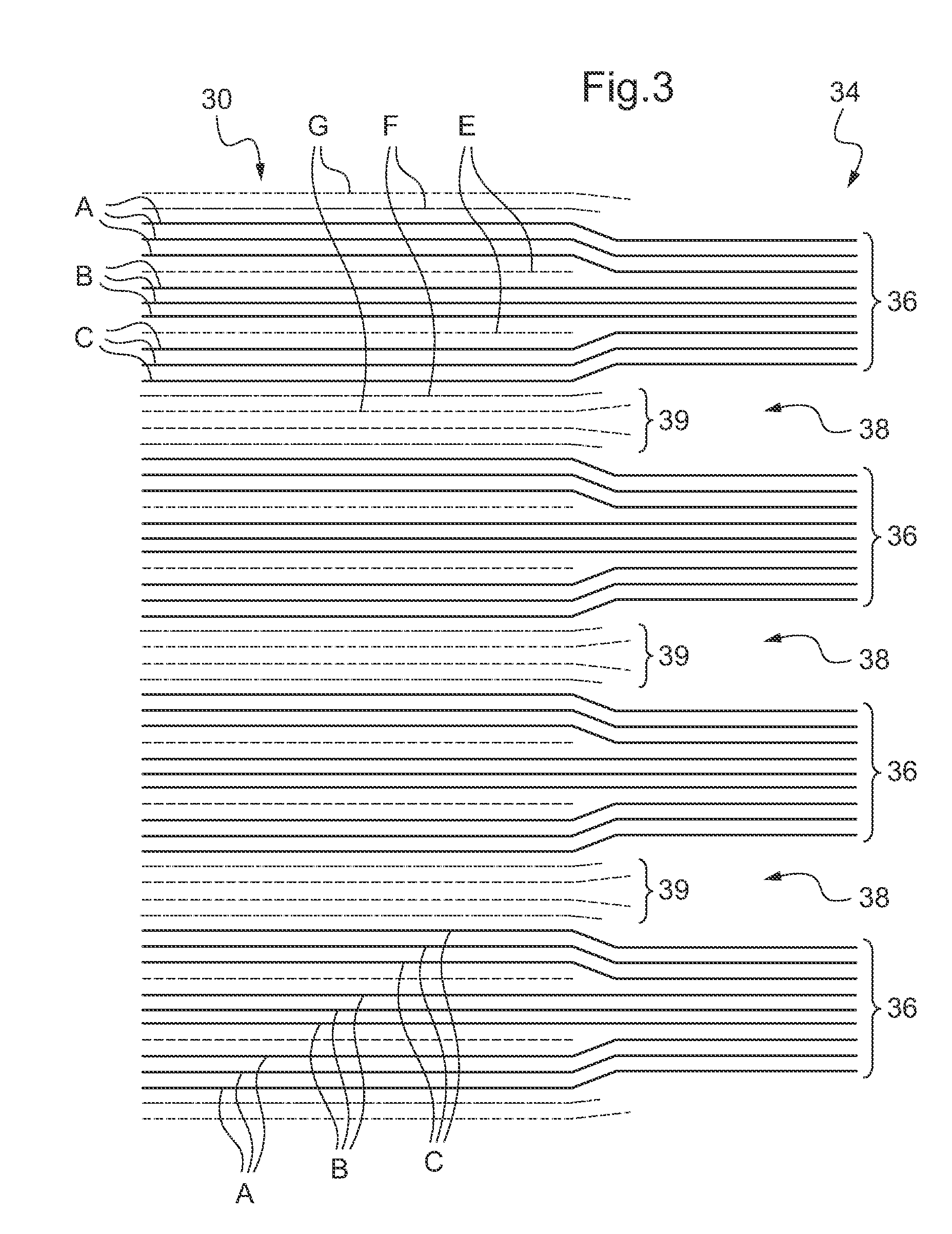Tension-torque-transmission element for a fenestron blade and method for producing it
a technology of fenestron blade and transmission element, which is applied in the direction of propulsive elements, marine propulsion, vessel construction, etc., can solve the problems of lack of damage tolerance and inacceptably short service life, and achieve the effects of wide width, long service life and high quality
- Summary
- Abstract
- Description
- Claims
- Application Information
AI Technical Summary
Benefits of technology
Problems solved by technology
Method used
Image
Examples
Embodiment Construction
[0039]FIG. 1 shows a tension-torque-transmission element 3 in a fibre-reinforced composite design. It comprises a central elongated rectangular torque-transmission element 34 which on its two narrow sides makes a transition to connecting sections 30. The connecting sections 30, which in horizontal projection are more than semi-circular in shape, comprise circular connecting eyes 32 that have a constant margin space R towards the margin 33 of the respective connecting section 30.
[0040]The torque-transmission element 34 comprises four individual tape-shaped lamellae 36 that extend parallel to each other and are stacked, which lamellae enclose slots 38 of the same nature. The lamellae 36 comprise several unidirectional fibre layers which extend right through, whose flow of the fibres is aligned in longitudinal direction of the tension-torque-transmission element 3. The lamellae 36, which are spaced apart from each other by slots 38, in the connecting sections 30 form a homogeneous laye...
PUM
| Property | Measurement | Unit |
|---|---|---|
| angles | aaaaa | aaaaa |
| angles | aaaaa | aaaaa |
| right-angle | aaaaa | aaaaa |
Abstract
Description
Claims
Application Information
 Login to View More
Login to View More - R&D
- Intellectual Property
- Life Sciences
- Materials
- Tech Scout
- Unparalleled Data Quality
- Higher Quality Content
- 60% Fewer Hallucinations
Browse by: Latest US Patents, China's latest patents, Technical Efficacy Thesaurus, Application Domain, Technology Topic, Popular Technical Reports.
© 2025 PatSnap. All rights reserved.Legal|Privacy policy|Modern Slavery Act Transparency Statement|Sitemap|About US| Contact US: help@patsnap.com



